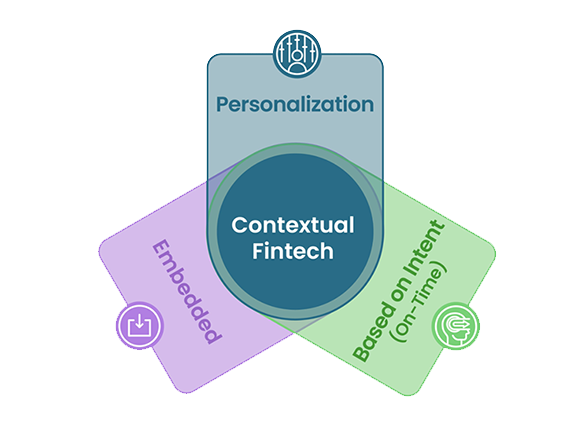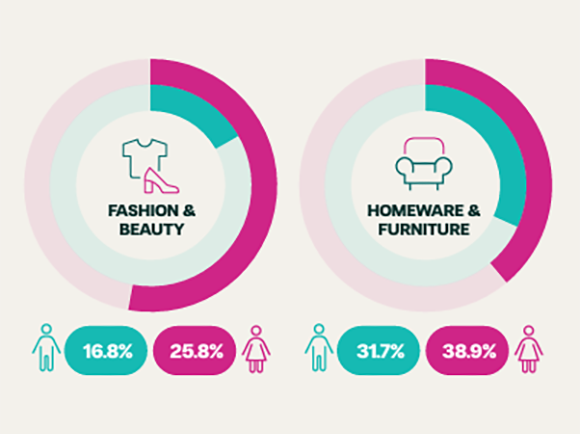Buy Now, Pay Later (BNPL) vs Credit Cards

Buying something now and paying for it later has been happening in one form or another for over 150 years. 19th century merchants began selling pianos, farm equipment and furniture on finance to make their products more attainable. But according to Bloomberg, it wasn’t until the advent of cars that financing became a mainstream activity, with Ford being the first to offer credit on motor vehicles in 1923. Then, in 1950, credit cards were introduced and took over as the dominant form of consumer credit.
But the times are indeed changing and Buy Now, Pay Later (BNPL), in its current guise, is reclaiming market share from credit cards as a payment option. Modern-day BNPL surged in popularity during the COVID-19 pandemic when lockdown accelerated e-commerce growth as consumers were no longer able to spend in physical stores. Since then, BNPL has become a common feature in retail stores too.
Though the credit card market still dwarfs that of checkout finance, the global BNPL market is projected to reach $90.51 billion by 2029, up from $22.86 billion in 2022. That’s a compound annual growth rate of 21.7% (for comparison, the credit card industry anticipates a CAGR of 8.7% in the same period).
The latest figures suggest BNPL will account for 6% of global ecommerce transactions by 2026 (up from 5% in 2022) while credit cards represent 15% in 2026 (down from 20%).
Such intense growth has observers wondering whether BNPL will overtake credit cards as the dominant payment method. But how is BNPL different from credit cards? Credit cards, after all, allow consumers to purchase goods immediately and pay for them over time, just like BNPL – but, unlike BNPL, credit cards often come with added rewards and other incentives, not to mention they can have a positive impact on a person’s credit rating.
The question, then, is will BNPL be able to compete with and overtake credit cards, or will customers stick to their usual habits? In this article, we’ll compare BNPL and credit cards from both a consumer and merchant perspective to determine whether or not BNPL has a future in payments.
What is Buy Now, Pay Later (BNPL)?
Buy Now, Pay Later typically works like so: the customer undergoes a soft credit check to be approved for finance at the checkout, pays a small deposit, then repays the rest of the sum over three to four repayments, usually within a period of twelve months or less at 0% interest. BNPL is mostly found on online checkouts, though is becoming increasingly available in-store and via physical cards. There are rarely any extra fees to pay, unless a payment is missed.
BNPL, generally speaking, is a micro-loan that applies to purchases with an average order value of less than £250, though there are other types of interest-free credit products that offer larger loans for bigger ticket items. Short-term Interest-free Credit (STIFC) can reach 48 months in length and can provide loans of £250–25,000. This type of retail finance generally requires more stringent credit worthiness checks through established lenders.
There are also similar credit products that charge an Annual Percentage Rate (APR) depending on the length of the repayment period and the size of the transaction. Strictly speaking, this type of product is more akin to a traditional loan than Buy Now, Pay Later. However, these products still fall within the ‘Retail Finance’ category.
Normally, BNPL is offered at a retailer’s checkout. There are, however, BNPL providers that allow for purchases made with physical cards that can be used anywhere, or via their application which provides access to a merchant ecosystem. The range of products that can be bought with BNPL is therefore increasing.
In the vast majority of cases, BNPL provides easy access to credit with the option of having nothing extra to pay. Suffice to say, it can be an incredibly useful tool for financial management, when used responsibly.
What is a credit card?
Credit cards allow users to borrow money from a credit card provider to purchase goods and services and pay for them at a later date. Credit cards typically charge interest, though some have interest-free periods to encourage sign-ups.
Credit card providers set a limit on how much one can spend depending on their credit worthiness. Purchases can be made universally and on multiple items (though some stores do not accept certain types of credit cards, e.g. American Express), following a hard credit check and a sometimes rather long approval process.
Once a purchase has been made, the outstanding balance is split into Equated Monthly Instalments (EMI) with a set minimum limit that must be repaid each month. Interest is charged to the consumer on any amount that has not been repaid each month. There are also late payment fees for defaults, which can leave a black mark on a customer’s credit score. There is no initial deposit for purchases, though some cards do charge a sign-up fee. The item with the highest balance is usually paid off first if multiple purchases have been made.
Credit cards are traditionally physical cards that require an application process before they are issued. Once they are ready, they need to be sent through the post to the applicant’s address. All in all, the entire application process can take several weeks. That explains the rise of mobile wallets, which can be ready to use in a matter of minutes.
How do the markets compare?
There were 52.7 million credit cards issued in the UK as of May 2022, with 35.5 million active accounts. This is over double the usage of recorded BNPL users, which totalled 17 million in the UK in 2022.
The credit card market is still growing, but its rate of growth pales in comparison to that of BNPL. While UK active credit card accounts grew 4.5% from May 2021 to May 2022, BNPL payments are expected to grow 45% year-on-year.
How do the business models compare?
The Buy Now, Pay Later business model
Providers pay merchants in full for a consumer’s purchase at the point of sale. Consumers then repay the merchant for the amount they have borrowed from the provider in instalments over an agreed short term. Each transaction is treated as a separate loan.
The gap in cashflow – the time between lending to a consumer and receiving repayments – is financed using funds from the providers’ own balance sheet. If there is a shortfall in funds, providers will borrow from central banks at the bank’s base rate. This means BNPL providers are sensitive to increases in interest rate rises, which make the cost of borrowing more expensive.
How do BNPL providers make money?
Merchants are charged a transaction fee, usually between 2% and 8%. Some providers also charge set-up fees to merchants, and a recurring monthly fee to use the service. Other providers, however, have been known to do things the other way around, by paying merchants to feature at their checkouts. Late repayment fees are sometimes charged, with the penalty fare varying depending on the provider.
The credit card business model
The credit card industry is made up of credit card issuers and credit card networks. Credit card issuers are the bank or union that lend the money to consumers for a transaction. Credit card networks take care of the technical aspects and process transactions. Some providers, such as American Express, are both issuers and networks.
Like BNPL providers, many credit card issuers lend from their own balance sheets, meaning they also borrow from central banks if needed. Credit thus becomes harder to come by and more expensive in times of high interest rates.
How do credit card providers make money?
Credit card networks charge merchants fees for providing their service. These can be split into transaction fees, and one-off/monthly fees. Transaction fees are usually 0.3% to 0.9%, but can be as high as 2.5% for commercial credit cards. Merchants are also charged a terminal fee for in-store payments, a gateway fee, an authorisation fee, a PCI compliance fee, and additional administrative fees.
Credit card issuers charge consumers for using their service. These fees are split into three categories: Interest; Annual Fees, and; Miscellaneous Fees. Interest is charged via an Annual Percentage Rate (APR) on any outstanding balance each month. This rate will vary depending on one’s credit worthiness, but can be between 5% and 30% – though a typical rate is 16.5%.
Consumers may also be charged an annual fee for cards that offer rewards or provide credit for consumers with poor credit history. Miscellaneous charges can also include late payment fees, balance transfers, cash withdrawals, and using the card abroad.
Benefits of Buy Now, Pay Later
BNPL: What’s in it for the consumers?
Easy access to credit, seamless shopping, and a flexible way to manage one’s money. But above all, interest-free credit. BNPL is an affordable, efficient alternative to traditional credit options, like credit cards. In the future, it’s likely that BNPL will involve firmer credit checks, which may also mean they will benefit customers’ credit scores.
BNPL: What’s in it for the merchants?
Merchants can benefit from an 30% average uplift in average transaction values, reduced cart abandonment, and increased volumes of conversions. The allure of BNPL can be so powerful that many consumers will actively look for retailers who provide BNPL to make a purchase. 9.5 million consumers in the UK said they would avoid buying from retailers that don’t offer BNPL at the checkout.
Benefits of credit cards
Credit Cards: What’s in it for consumers?
Aside from increased flexibility over budgets and enhanced money management, credit cards come with a plethora of benefits for consumers. These include cash back, air miles, reward points, and discounts to name a few. The majority of credit cards are accepted everywhere, making it an easy way to pay for goods. Credit cards can also help to improve one’s credit score.
Credit Cards: What’s in it for merchants?
Not a lot, really. Though the overall merchant fees are indeed lower for credit cards than BNPL, credit cards do not afford merchants the same uptick in sales volumes. There is no real distinction between credit cards and debit cards as a payment method from a merchant’s perspective, despite the former charging higher transaction fees.
BNPL Disadvantages
BNPL: What are the disadvantages for consumers?
The BNPL market is currently unregulated. As such, it does not afford its users many of the same protections as regulated credit products, like credit cards.
Section 75, for example, is legislation that protects consumers if a product bought on credit is faulty or if the item does not arrive. Consumers are refunded the cost of the purchase if their application is successful. But Section 75 is currently not extended to the BNPL market.
Paying on time also does not yet count positively towards one’s credit score, yet a default can negatively impact a consumer’s credit history. This has been a concern amongst consumer groups who worry that some consumers may have entered into BNPL agreements without fully understanding the risks involved.
It must be stated, though, that the market will be regulated in the UK in 2023.
BNPL: What are the disadvantages for merchants?
There are potential brand, trust and ethical implications to consider for BNPL.
At the point of sale, consumers are taken away from the merchant’s checkout and onto the BNPL provider’s. The provider’s branding appears next to, or sometimes in place of, the merchants, handing over control of the customer journey to the third party. This creates friction at the most crucial part of the customer’s experience – the checkout – which can jeopardise the merchant’s relationship with their customer.
BNPL providers are also increasingly moving towards becoming ‘super apps’ and are creating ecosystems for consumers to purchase from within these selective spaces. Retailers that feature within this ecosystem appear alongside their competitors in a race-to-the-bottom for prices, though there are co-marketing opportunities that retailers can take advantage of with the providers.
There are ethical implications of providing BNPL too, particularly in the context of a cost of living crisis. BNPL providers have recently been criticised for encouraging consumers to take out unnecessary loans for everyday essentials like food, fuel and groceries. Merchants seen to be encouraging this type of financing are likely to be caught in the tailwinds of any public backlash.
Credit card disadvantages
Credit Cards: What are the disadvantages for consumers?
High-interest rates and fees are the major drawback of credit cards. Marginalised consumers – those with little or no credit history – are often charged much higher rates to access credit, or are denied credit altogether. There are also the obvious risks to one’s credit score and fraud if one’s card is stolen, but these are ubiquitous concerns across all credit products.
Credit Cards: What are the disadvantages for merchants?
As discussed, credit card providers charge higher fees per transaction than debit cards, despite there being no additional benefits in this department. But merchants need a terminal to accept debit cards, which are obtained by credit card companies. So for physical or online purchases to be accepted by debit card, merchants must have a contract with a credit card provider. There is therefore no way for a merchant to accept debit payments and avoid credit card fees.
Which is better: BNPL or credit card?
BNPL and credit cards are both valuable sources of credit that boost purchasing and sales for consumers and businesses.
Credit cards currently provide consumers with a wealth of additional benefits that BNPL does not yet support. But the BNPL market is fast developing and providers are beginning to offer loyalty points and the ability to split payments on any item. The BNPL market will also soon be regulated which will extend the consumer protections to BNPL users and negate many of the current disadvantages of BNPL in the process. These include potential public relations fallouts for merchants.
Once regulation is enforced, the only major differences between the two from a consumer perspective will be usability, access and cost.
BNPL is famed for its seamless online shopping experience whilst credit cards still struggle with imperfect forms at every checkout. Underbanked consumers who typically struggle to access traditional credit are approved microloans based on less stringent credit worthiness checks. BNPL also offers zero fees unless a payment is missed.
So from a consumer perspective, whilst credit cards do appear to have the upper hand at the moment, BNPL is becoming the more user friendly option, granting credit to previously marginalised consumers, and is ultimately more cost effective than credit cards. The playing field will seem much more level when regulation starts to be enforced.
What about from a merchant’s perspective?
The benefits of credit cards are concentrated towards the consumer. Merchants are charged a higher rate of fees for transactions than debit cards despite there being no real difference in the payment method from the retailer’s perspective.
BNPL, on the other hand, boasts an average uptick in sales, a boost in conversion rates, and a reduction in cart abandonment. The fees are higher than with credit cards, but merchants are generally happy to accept these as BNPL grants access to a pool of sales they otherwise would not have access to.
BNPL Alternatives: Whitelabel retail finance
The model discussed above is but one version of a range of Buy Now, Pay Later products. There are factions of the industry that specialise in already regulated, responsible lending that sidesteps the current pitfalls of what we have referred to as Buy Now, Pay Later.
Divido, for example, provides a spectrum of short-term interest-free and interest-bearing credit products via our multi-lender platform. Merchants are connected to Tier One lenders while still being able to offer checkout finance under their own branding. The same benefits apply – increased basket sizes, a boost in sales, and reduced cart abandonment – but the retailer retains control over their customer journey, avoiding the aforementioned issues of brand, trust and ethics.
A sustainable Buy Now, Pay Later strategy starts with building trust at the checkout. Download our new whitepaper for research-backed tips to help you communicate your proposition.
You might also
be interested in
Keen to know more?








